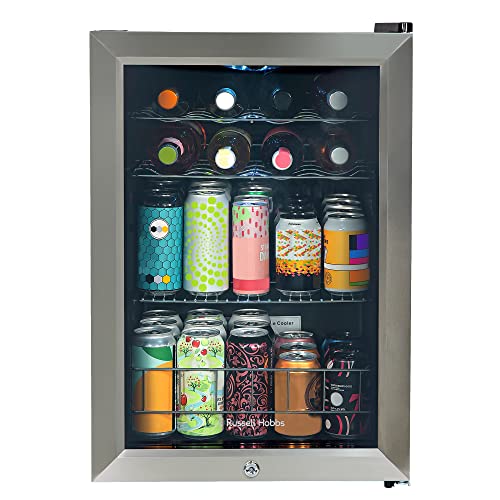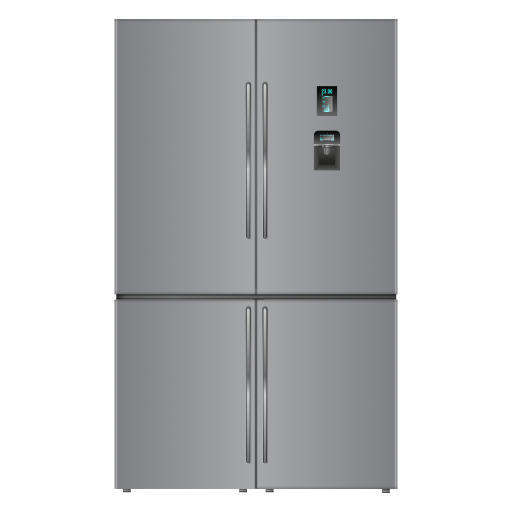"Ask Me Anything," 10 Responses To Your Questions About Wine…
페이지 정보
작성자 Lupita 작성일 24-12-23 15:07 조회 2 댓글 0본문
 The Benefits of a Wine Cooler Fridge
The Benefits of a Wine Cooler FridgeA wine cooler fridge creates a controlled temperature environment that is ideal for Cabernet Sauvignon and Pinot Grigio. This temperature control preserves the wine's flavor until you are ready to enjoy them.
Thermoelectric refrigerators are also quiet and free of vibration. This is crucial, particularly for long-term storage. Vibrations within wine can cause an increase in esters and dull the flavors.
Cooling System
When it comes to the storage of wine, temperature is the most important factor. The majority of wines require a cool beer and wine refrigerator stable environment in order to maintain their full flavor potential. Wine fridges provide a stable environment where your wine can develop. These fridges are built to a higher standard than standard refrigerators and mini fridges, and have internal fans which help distribute air evenly so your wine chiller under counter is consistently at its best.
Many wine refrigerators have double-paned, or UV-protected doors that block out harmful light and heat which can damage your wines. They also use a compressor to ensure that the refrigerator keeps your wine at the ideal temperature, which is more consistent than standard refrigerators and coolers. These wine refrigerators are constructed with a compressor that minimizes vibrations, which can disrupt the chemical reactions in the bottle and affect the process of maturation of your wine. Many models have an absorption system that can reduce the vibration which allows your wine to age without disturbance.
Certain wine coolers also prevent your wines from freezing, which is what happens when you store them in very cold temperatures. The wine that is frozen can alter their taste, and could cause the cork to move out from the bottle, exposing the wine to oxygen - which is not a good idea for the long-term storage and preservation of fine wines. Wine coolers are designed to ensure that the bottles are kept at temperatures between 50 and 60 degrees Fahrenheit, which is ideal for long-term storage.
The majority of wine coolers come with either single- or dual-zone temperature controls. Single-zone wine fridges are perfect for those who are new to wine and want to taste a range of wines, and dual-zone wine fridges are ideal for those who have an interest in fine wines. Dual-zone wine refrigerators allow you to store your favourite wines at the ideal temperature for drinking, or to set one zone for aging, while the other is for serving.
Certain wine fridges are designed with a chrome rack that can be removed and a doors that are reversible, which gives you more options for placement and flexibility. Other features could include an alarm system, wine bottle probe, wi-fi controllers and a digital display.
Capacity of Storage
If you have a substantial collection, you will need a wine cooler refrigerator. A typical fridge will only hold a handful of bottles. This will keep your bottles at the ideal temperature and humidity levels to extend their life.
Take inventory of your wine collection and estimate the rate at which you expect you will expand your collection in the near future. Consider the location you plan to install your wine refrigerator and ensure it is able to fit the height and width of the model you prefer.
When comparing wine refrigerators you will find that many models have both single and dual zone cooling. Dual zone refrigeration allows you to store both red and white wines at the ideal temperature. Touch panels with digital controls make it easy to make adjustments to settings. In addition many wine refrigerators have LED interior lighting as well as double-layer tempered glass doors to protect against harmful UV radiation.
Find features that contribute to the aesthetic of your wine cooler refrigerator and match the rest of your home's decor. Wine refrigerators are available in a variety of finishes such as wood tones and stainless steel. Many models have modern, sleek designs which is perfect for contemporary and transitional style homes. Wine refrigerators with a kosher option will turn off the lights inside and display in order to comply with Jewish laws governing kosher food.
Finally, choose a wine cooler with adjustable leveling legs to ensure your fridge is stable and a wine rack that supports your bottles with a secure. A few models have a charcoal filter system that circulates clean, odor-free air to keep your wines tasting their best. Efficiency in energy is also essential to lower your carbon footprint, and to save money on utility bills. If you're on a an extremely tight budget, search for rebates and financing options to lower the cost of purchasing a new wine fridge.
Energy Efficiency
Wine refrigerators are an excellent way to store your favorite wine fridge Kitchen. They can reduce your energy consumption by up to 10%. However, their power consumption varies depending on their dimensions and the temperature settings. For the best energy efficiency, go for one with an Energy Star rating. Also, follow the manufacturer's instructions for installation and maintenance.
Choosing a refrigerator with the appropriate size and temperature is crucial to save energy. In general, larger refrigerators use more energy than smaller ones. To improve the efficiency of your fridge, it is vital to keep the compressor's coils clear. In addition, you should keep your wine cooler away from sources of heat such as stoves and radiators to prevent overworking the fridge.
In addition to reducing your energy bills, a wine fridge can assist you in storing and serve wine at the perfect temperature to ensure its flavor and taste. Thermoelectric wine coolers use the Peltier effect to cool wines by transferring thermal flux between two sides. They are lighter than compressor wine refrigerators, which makes them more convenient to move around in the house. Thermoelectric wine fridges can be set up in damp locations unlike other refrigerators.
When choosing a wine refrigerator it is essential to consider its energy efficiency as well as the type of insulation used in its construction. Thermoelectric models are more efficient in energy use and quieter than compressors. However, they're not the ideal choice for humid environments such as basements or garages, because their cooling capacity is limited.
In this day and age of high-priced electricity Freestanding wine refrigerators are a great way to store your valuable bottles of wine. However, you must be aware of their energy consumption. The energy label on your appliance shows how much energy it consumes on a daily basis as well as over the course of a year. The kWh/annum figure is the most important number.
If you're looking for a wine refrigerator, ensure that it comes with an Energy Star certification. This ensures that it is in compliance with energy-saving standards. On the energy label you can see the energy consumption of various appliances. You can make better decisions when you purchase a new wine refrigerator.
Noise Level
The cooling system in wine fridges is an extremely robust and precise piece of equipment that requires a lot of work to keep its contents cool. In turn, it does produce a bit of noise, but advances in compressor technology have drastically reduced the amount of noise compared to past. Generally speaking you can expect decibel levels ranging from 35 to 48 dB in normal operation. This means that the sound output of many wine coolers in the same range as background noise in a quiet neighborhood or library.
Apart from the normal hum that comes from the cooling system, certain wine coolers can make clicking and rattling sounds that result from internal vibrations as well as other factors. They can be caused by bottles rattling against one another or on shelves, a lack in insulation, which causes cold spots loose screws that allow components to vibrate, and even temperatures that cause components to expand and shrink at different rates.
Certain wine coolers make a hissing noise when they are in humid conditions or during humid seasons. This is due to the refrigerant moving through the circulation pipes and is as a normal event.
The positioning of your wine cooler's location will also impact the sound amount it creates. To reduce the noise, place it away from sources of heat and direct sunlight. Also avoid areas that are prone to traffic. It is also possible to have your wine cooler built into other under cabinet wine refrigerator units in the living room or kitchen to reduce the amount of noise it will amplify from its position.
 Some wine fridge brands offer especially quiet models that have been engineered to be as silent as possible for a fridge like this. They include La Sommeliere, Montpellier Climadiff and Avintage. They are typically found in the higher cost categories of wine refrigerators, however, they are as quiet as computers and are perfect for those who want to chill their wine quietly.
Some wine fridge brands offer especially quiet models that have been engineered to be as silent as possible for a fridge like this. They include La Sommeliere, Montpellier Climadiff and Avintage. They are typically found in the higher cost categories of wine refrigerators, however, they are as quiet as computers and are perfect for those who want to chill their wine quietly.- 이전글 11 Methods To Redesign Completely Your Replacement Car Key Costs
- 다음글 You'll Never Be Able To Figure Out This 4 Seater Recliner Sofa Leather's Tricks
댓글목록 0
등록된 댓글이 없습니다.






